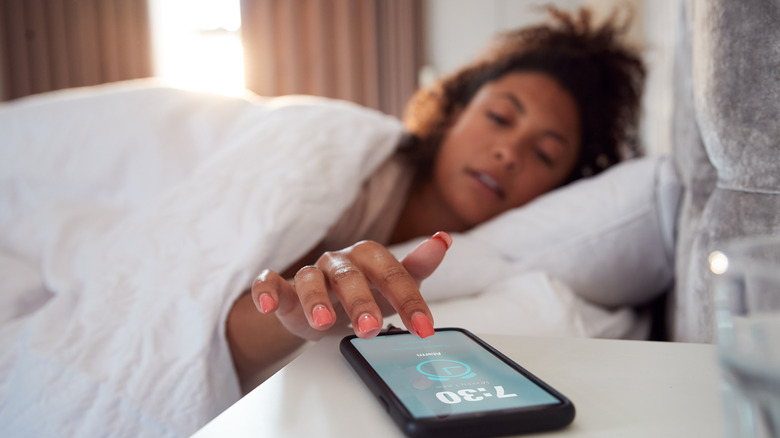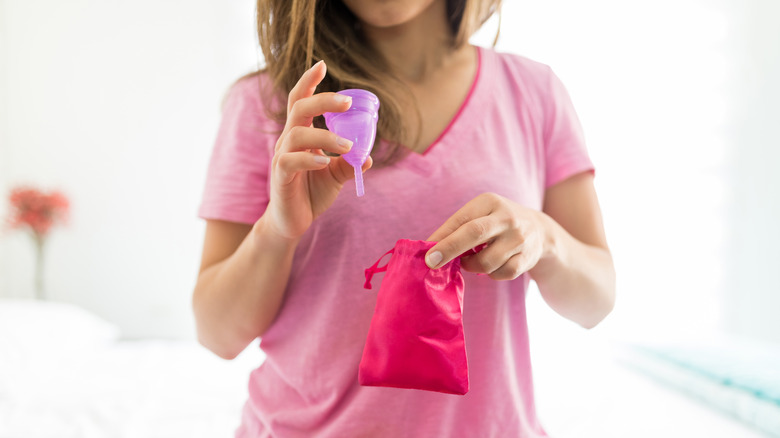Is It Safe To Sleep With A Tampon In?
Tampons are one of the most commonly used menstrual products on the market. One 2015 survey published in the journal Environmental Health found that 55% of white women, 31% of Black women, and 22% of Mexican-American women reported using tampons. It's easy to see why tampons are a popular choice. As Healthline points out, tampons are easy to hide, comfortable to wear, and can be used during a variety of activities including swimming.
On the other hand, there are some downsides to relying on these cotton cylinders. Tampons can leak, especially if the size is too small, and it can take time to find the right type. Tampons can also be drying and may irritate the vagina. But the most serious concern is the risk of developing toxic shock syndrome (TSS).
According to Mayo Clinic, TSS is a rare but fatal condition caused by certain bacterial infections. These infections may occur when tampons, especially superabsorbent types, are kept in the body for several hours. Signs of toxic shock syndrome can include fever, vomiting, rashes and redness on the body, seizures, and confusion.
Given the severity of TSS, it's crucial to use tampons properly to minimize risk — and that includes when sleeping.
Tampons are safe overnight if used correctly
The main concern with sleeping with a tampon is the possibility of leaving it in for too long — raising the risk of developing toxic shock syndrome. The U.S. Food & Drug Administration urges against leaving tampons in longer than eight hours. Sleeping more than eight hours at a time while wearing a tampon may jeopardize your health.
But what if you sleep fewer hours with a tampon in? In most cases, that's totally fine, according to Cleveland Clinic. To be safe, insert it right before heading to bed, and use the tampon with the lowest absorbency level for your flow. For example, if your flow is only light or medium, steer clear of higher-absorbency tampons.
If you want to sleep longer than eight hours, or if your flow is on the heavier side, consider setting an alarm so you can wake up during the night to change tampons. Keep in mind, though, that this might stop you from getting valuable quality sleep.
Other ways to manage menstrual flow while sleeping
Besides tampons, there are other menstrual products that, when used overnight, allow you to sleep soundly without worrying about staining your sheets. If you prefer insertable products, a menstrual cup is a safe alternative to tampons (per Healthline). While infections and toxic shock syndrome could result from wearing a cup, the risk is extremely low. Still, cups should be removed and cleaned every 12 hours — which gives you much more time to snooze than tampons.
Pads are also safe to use while sleeping, and they come in a variety of shapes and sizes, including overnight styles (per Healthline). They don't generally need to be changed during the night, though they may move around and wrinkle over time.
A relatively new addition to the menstrual product market is period underwear. Period underwear are reusable undergarments designed to absorb period blood, according to Cleveland Clinic. Each pair generally requires changing every 12 hours, making them a stress-free choice for sleep. Just be sure to wash and dry the underwear properly to keep them sanitary and safe to use.



